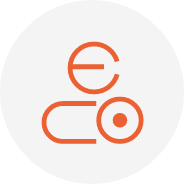In modern industrial production, robotic bolt tightening has become one of the key technologies for improving production efficiency and quality. With the continuous development of intelligent manufacturing, more and more enterprises are adopting robots to carry out bolt-tightening tasks. So, what are the standout advantages of robotic screw tightening?

Speed and Consistency: Precise, Stable Output
One of the main advantages of robots in bolt tightening is their speed and consistency. Robots can tighten every screw according to pre-programmed routines. Because they can operate 24/7 without interruption, their production efficiency far surpasses manual labor. In automotive manufacturing, machining, and similar industries, robots can quickly and accurately complete large numbers of bolt-tightening tasks, significantly shortening production cycles and boosting overall productivity. As an industry leader, Danikor’s robotic tightening systems use advanced control algorithms and high-precision sensors to ensure that every screw is tightened with identical process parameters. This highly consistent tightening not only guarantees stable product quality but also effectively reduces defects caused by improper tightening.
Stable and Traceable Quality: Smart Monitoring, End-to-End Assurance
During the bolt-tightening process, robots deliver consistently high quality and complete traceability. Each tightening operation is recorded in real time, including torque, angle, and time data. The system can upload this data to a manufacturing execution system (MES) or quality management system (QMS) to form a full-process digital record. Once a quality issue arises, engineers can quickly trace the problem to the specific workstation, tightening tool, and even the individual screw, enabling rapid root-cause analysis and corrective action. Danikor’s tightening system supports industry-standard communication protocols such as Modbus-TCP, EtherNet/IP, and OPC-UA, ensuring seamless integration with existing plant information systems.
Flexibility and Adaptability: One-Click Switching, Agile Production
Traditional dedicated tightening equipment must be redesigned and retooled whenever products are updated, incurring high costs and long lead times. In contrast, six-axis or SCARA robots can be reprogrammed or simply fitted with a new end-effector to handle different screw positions and sizes. Danikor’s modular tightening spindle and quick-change tool magazine allow one-click switching between different tightening tasks within minutes, dramatically shortening product changeover times. Combined with robot guidance vision systems, the robot can automatically recognize product variants, adjust tightening parameters on the fly, and achieve true flexible manufacturing.
Reduced Labor Intensity and Workplace Injuries: Improved Ergonomics
Manual bolt tightening is repetitive, labor-intensive work that can easily cause fatigue and musculoskeletal injuries. Robots take over these monotonous tasks, freeing workers for higher-value activities such as quality inspection and process optimization. In addition, robots operate safely in environments that may expose humans to noise, dust, and vibration, effectively lowering occupational health risks. Danikor’s tightening solutions include safety light curtains, collision-detection sensors, and force-torque monitoring, ensuring that both operators and equipment remain safe during operation.
Cost Effectiveness: Fast ROI, Long-Term Gains
Although the initial investment in robotic tightening systems is higher than that of manual tools, the comprehensive benefits quickly offset the cost. First, robot systems reduce labor expenses and the hidden costs of turnover and training. Second, consistent tightening quality lowers scrap and rework rates, saving on materials and warranty claims. Third, 24/7 operation capability boosts overall equipment effectiveness (OEE). According to data from Danikor’s customers, typical payback periods for robotic tightening cells range from 12 to 18 months, after which the systems continue to generate substantial economic value for the remainder of their 8–10 year service life.
Typical Application Cases
Automotive seat assembly: A Tier-1 supplier deployed Danikor’s six-axis robotic tightening cell to secure seat tracks with 14 bolts per seat. Cycle time dropped from 45 seconds to 28 seconds, and the first-pass yield rose from 92 % to 99.7 %.
5G base-station filter module: A communication equipment manufacturer uses SCARA robots to tighten 48 miniature screws on aluminum housings. The robot’s ±2 % torque accuracy ensures reliable RF sealing, while barcode scanning guarantees complete traceability.
Home-appliance compressor line: A white-goods producer integrated Danikor’s tightening spindle on a gantry robot. The cell automatically adapts to three compressor models, reducing changeover time from 30 minutes to under 5 minutes.
Conclusion
Robotic bolt tightening delivers unmatched advantages in speed, quality, flexibility, safety, and cost-effectiveness. It has become an indispensable building block of modern smart factories. With decades of industry experience and continuous technological innovation, Danikor offers complete robotic tightening solutions—from handheld smart tools to fully automated tightening cells—helping customers worldwide accelerate their digital transformation and achieve sustainable competitive advantage.











